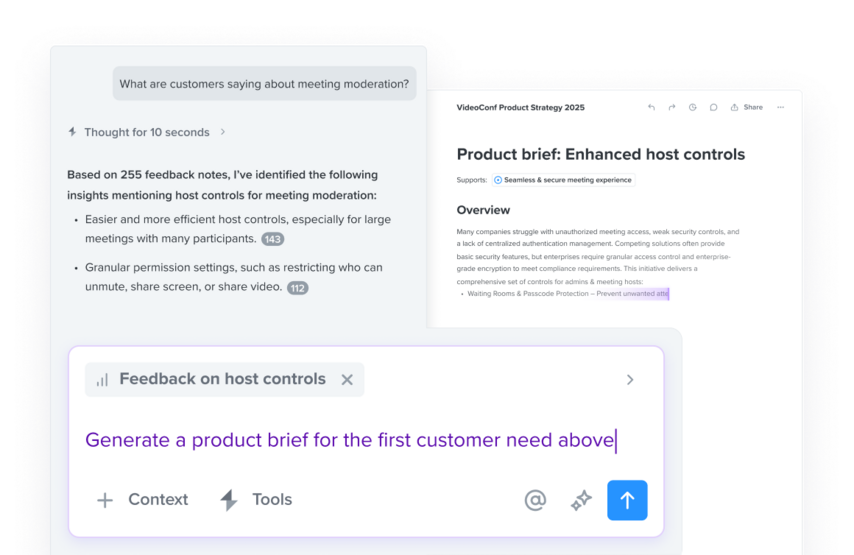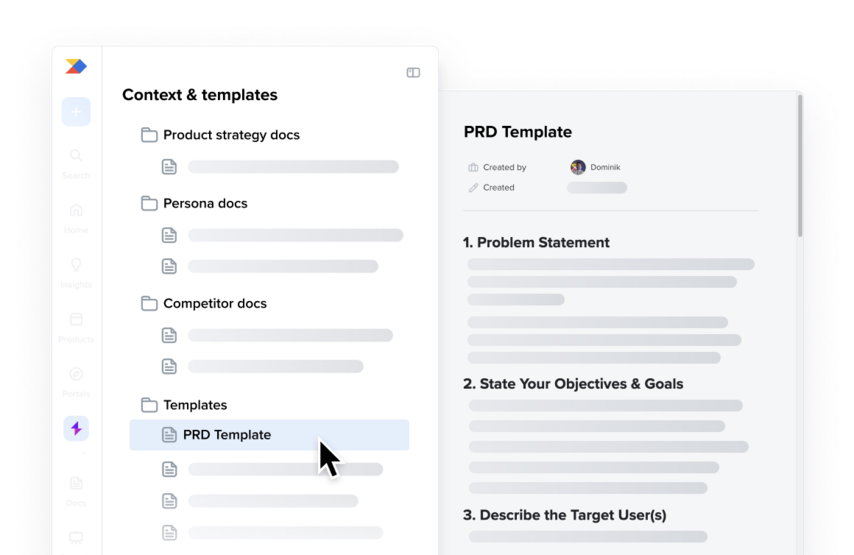Productboard Spark
Move from new idea to delivery-ready faster by specifying your next initiative with AI that understands your product, customers, and business.


As product delivery continues to accelerate, the new bottleneck is the quality of your ideas. Productboard’s AI helps you provide greater clarity to all collaborators.

AI for product management
Transform rough ideas into comprehensive, delivery-ready specifications by employing AI that can tap into context about your product, customers, and business goals.
Explore customer needs
Draft a product brief
Refine product requirements

AI Context management
Unlike the siloed experience of LLM chat tools, Productboard's AI allows teams to develop shared organizational context that lives on from one initiative to the next.
Document your strategy & business goals
Capture personas & competitive intelligence
Define templates so AI outputs follow your conventions
Our newest AI capabilities are just around the corner.
Spark is a specialized product management agent that accelerates some of the most time-consuming aspects of taking an initial idea to a well-defined specification.
Product managers and other collaborators can interact with Spark through a conversational interface to explore product ideas, inquire into customer needs (based on actual customer requests and feedback), and generate documents like product briefs, product requirement documents (PRDs), user research reports, competitive intelligence, product launch materials, and more.
As an AI agent, Spark can create new documents and edit existing documents. These documents can then be collaborated over with colleagues and further refined with help from AI. Moving forward, they can then be used as context in future AI prompts. For example, you could prompt Spark to generate a product specification based on context drawn from your Product strategy doc, User personas doc, and PRD template.
Unlike generic AI tools:
Spark is currently available to select Productboard users as part of an ongoing beta. You can join the waitlist from this page.
Note that during this phase of the beta program, current Productboard customers can only access Spark in a separate workspace outside the organization’s existing workspace.
Spark is powered by large language models by Anthropic and OpenAI. If you choose to use Productboard’s AI capabilities, you agree to Anthropic, OpenAI, and Amazon Bedrock being subprocessors of your data. For more information, please review Productboard’s list of subprocessors.
Spark can access any documents you provide in your workspace in addition to customer feedback notes and associated data. In the near future, Spark will be able to access additional product data in your workspace to carry out more actions and provide more relevant responses.
Spark follows Productboard's standard security and privacy practices. Your data remains within your workspace and is not used to train external AI models.
Note that during this phase of the beta program, current Productboard customers can only access Spark in a separate workspace outside the organization’s existing workspace.
Have additional questions? Send us an email to hello@productboard.com